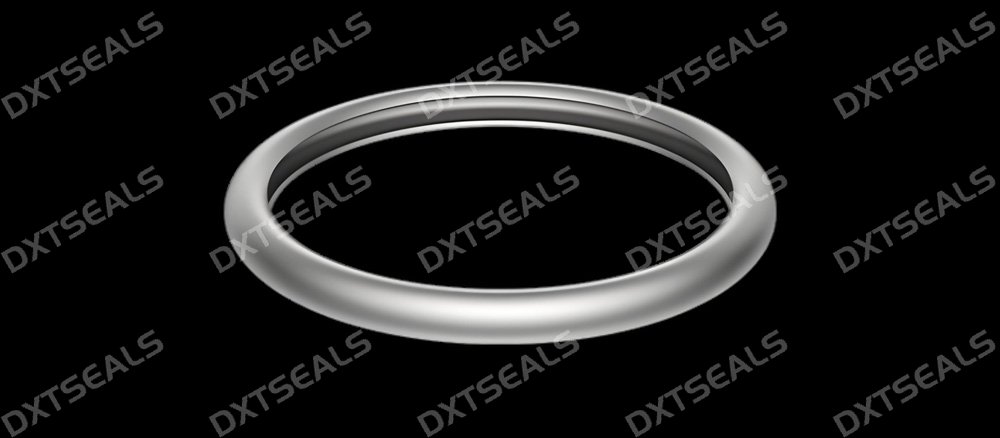Introduction
In demanding industrial applications, such as aerospace, oil and gas, and power generation, equipment must endure extreme conditions such as high pressures, fluctuating temperatures, and exposure to corrosive substances. A critical component for ensuring these systems operate efficiently and safely is the metal sealing ring. These seals play a vital role in preventing leaks, protecting sensitive machinery, and ensuring long-term reliability. This article will guide you on how to choose the right metal sealing rings for extreme conditions, helping you make informed decisions for your sealing needs.
1. Understanding Metal Sealing Rings
Metal sealing rings are essential sealing solutions designed to create a tight, durable barrier between two mating surfaces. Made from a variety of metals, including stainless steel, Inconel, bronze, and titanium, these seals are engineered to withstand extreme temperature fluctuations, high pressures, and corrosive environments. Unlike traditional rubber seals, metal sealing rings offer superior strength, durability, and resistance to aggressive chemicals, making them an ideal choice for harsh applications.
2. Key Factors to Consider When Choosing Metal Sealing Rings
2.1 Temperature Resistance
Metal sealing rings are well-known for their ability to withstand high temperatures without losing integrity. When selecting a metal seal for high-temperature applications (such as in gas turbines, nuclear reactors, or combustion engines), consider materials like Inconel or titanium, which maintain their strength and sealing capabilities even at temperatures above 1000°C.
For low-temperature applications (such as in cryogenic systems or deep-sea exploration), seals made from materials like stainless steel or bronze offer excellent performance in extreme cold while maintaining elasticity and sealing efficiency.
2.2 Pressure Resistance
Sealing rings used in high-pressure environments must be able to withstand extreme internal or external pressures without failure. Metal sealing rings are particularly suitable for high-pressure systems because of their robust structure. Materials like stainless steel and Inconel are commonly chosen for their ability to resist deformation under significant pressure.
In applications such as hydraulic systems, oil rigs, or high-pressure vessels, it's crucial to select a sealing ring with the right pressure rating and material strength to prevent leaks that could compromise system safety and performance.
2.3 Corrosion Resistance
In many industrial environments, metal sealing rings must resist corrosive chemicals, saline environments, or acidic conditions. Stainless steel and titanium are commonly used in environments where saltwater or acidic gases are prevalent, as these materials provide excellent resistance to corrosion and pitting.
For systems exposed to chemical exposure, such as chemical processing plants or petrochemical industries, selecting a corrosion-resistant material is crucial to ensure the longevity and efficiency of the sealing rings.
2.4 Flexibility and Adaptability
While metal sealing rings are rigid, their ability to adapt to slight surface irregularities makes them useful in sealing applications where high surface pressure and minor deformations occur. For example, metal C-rings and metal-to-metal seals offer excellent adaptability to fluctuating conditions while maintaining a reliable seal.
In environments where thermal expansion or vibration occurs frequently, selecting a sealing ring that can handle these variations will ensure continued efficiency. Consider metal seals with spring-back features or soft sealing inserts to improve flexibility and sealing reliability.
3. Types of Metal Sealing Rings and Their Applications
3.1 O-Rings
Metal O-rings are used in various applications, offering reliable sealing capabilities across industries that require high-pressure resistance, such as in aerospace, petrochemical, and automotive systems. They are available in a range of metals, with stainless steel O-rings being the most common. These seals are ideal for applications that involve exposure to extreme temperatures or fluctuating pressure levels.
3.2 C-Rings and U-Rings
C-rings and U-rings are commonly used in flanged pipe joints, compressors, and turbine applications where both high pressure and temperature are present. The U-shaped design allows for a wider sealing surface, providing enhanced sealing effectiveness in harsh conditions.
3.3 Metal-to-Metal Seals
Metal-to-metal seals are designed to create a tight, high-strength bond between two metal surfaces. These seals are often used in high-stress environments like nuclear reactors, gas turbines, and oil refineries. The primary advantage of metal-to-metal seals is their ability to handle extreme pressure and thermal cycling while preventing fluid or gas leakage.
3.4 Spiral Wound Seals
Spiral wound seals are commonly used in flange sealing applications where high temperatures and pressures are present. These seals are composed of multiple layers of metal wound together, offering excellent resistance to pressure, vibration, and temperature cycling. They are frequently used in industries such as oil and gas, chemical processing, and power generation.
4. How to Select the Right Metal Sealing Ring
Choosing the right metal sealing ring for your application requires careful consideration of several factors:
- Assess the environmental conditions: Understand the temperatures, pressures, and corrosive agents your sealing system will be exposed to.
- Material selection: Choose the right material for the sealing ring based on its strength, corrosion resistance, and temperature stability.
- Seal design: Consider the seal design that best suits your application, whether it’s an O-ring, C-ring, spiral wound seal, or metal-to-metal seal.
- Certification and compliance: Ensure that the metal sealing rings meet relevant industry standards and certifications for safety and reliability.
- Consult with an expert: If in doubt, seek advice from sealing ring manufacturers or experts who can provide customized solutions for your specific needs.
Conclusion
When it comes to sealing in extreme conditions, metal sealing rings are an essential component for ensuring system performance and safety. Whether dealing with high temperatures, pressures, or corrosive environments, choosing the right metal sealing ring can prevent leaks, minimize maintenance costs, and extend the lifespan of your equipment. By understanding the factors that influence the selection process, you can make informed decisions that will enhance the efficiency and reliability of your industrial systems.

